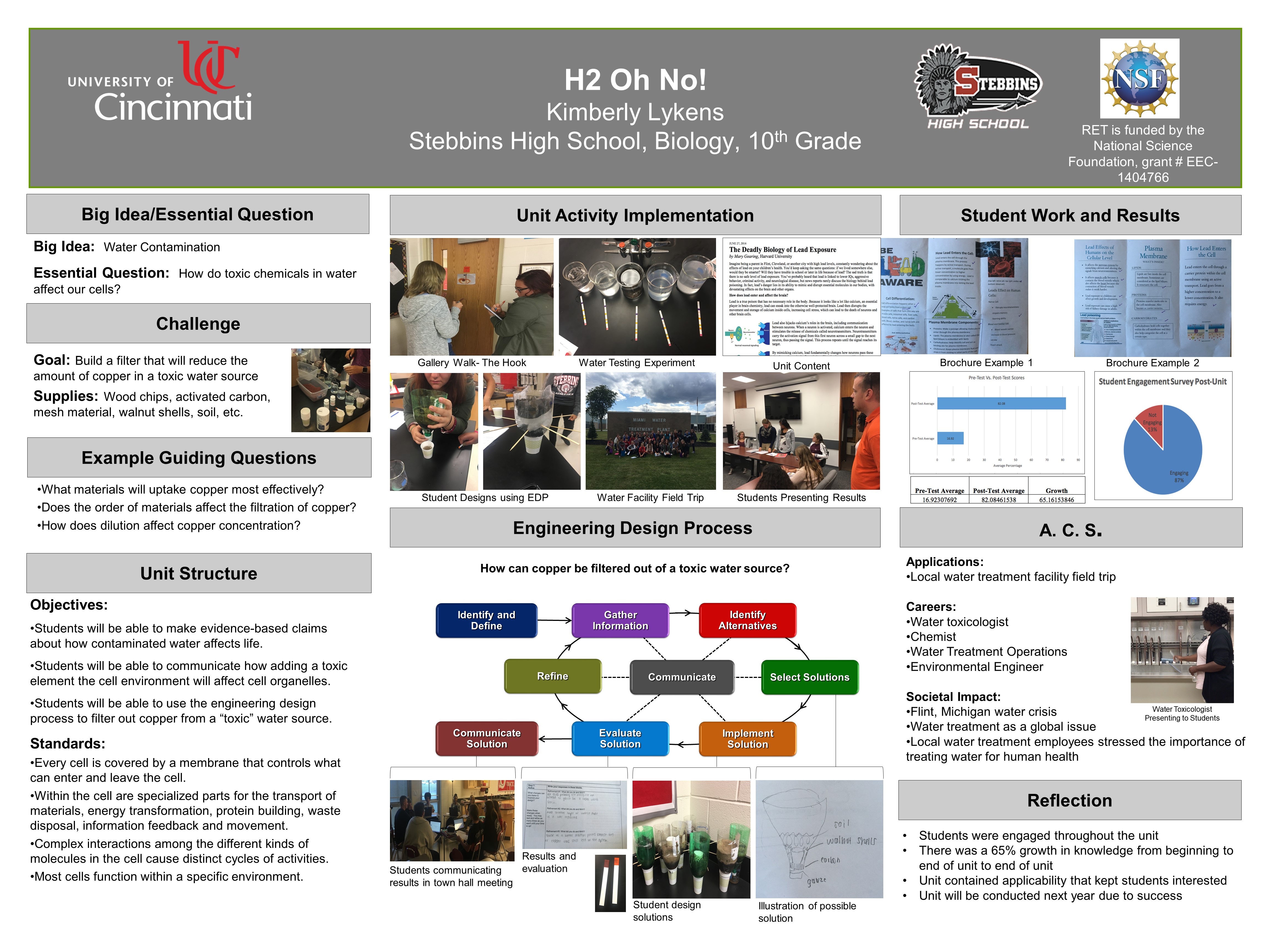Research Experience for Teachers (2017-2018)
The Impact of Leaching Metals from Land to Water on Cellular Mechanisms
 |
||||||
|
||||||
Keywords:
|
|
The Big Idea (including global relevance) Water Contamination
|
|
Essential Questions
|
|
The Hook Students will walk around the room and view pictures of water sources from the around the world. Students will discuss emotions that come to mind when viewing these images. Students will then be shown a video about the water crisis at Flint Michigan. Lastly, students will make qualitative and quantitative observations about water testing data and draw conclusions about which water source is most conducive for life. |
|
The Challenge Students will be provided a solution of copper chloride and will be asked to purify the water source of copper, a toxic element. |
|
Guiding Questions
|
ACS (Real world applications; career connections; societal impact)
Humans need water to live. Leaching metal by degradation and runoff is a large concern for the health of a community. Containing this metal is important to ensure it is not consumed by humans and other wildlife.
Cases of metal leaching into water have affected communities in the United States. Furthermore, the issue of clean water affects communities world-wide.
Chemist, Water treatment operations, Chemical Engineer, Design Engineer, Environmental Engineer, Mechanical Engineer, Materials Engineer, Systems Engineer, Water toxicologist
Misconceptions
- All cells are the same size and shape, i.e., there is a generic cell
- Animal cells do not eliminate their own wastes.
- Cells do not need water to function.
- The interior of a cell is solid.
- It is not possible for molecules to enter or leave a cell.
Unit Lessons and Activities
- Lesson 1:
Framing the Problem. Students will explore how different water samples affect brine shrimp survival. In doing, so they will use the Big Idea of Water Contamination to determine the Essential Question and Challenge. They will also explore the function of the cell organelles and how water quality impacts their survival.- Activity 1: Introduction of Big Idea, Essential Questions, Introduce Hook (1 day), water testing experiment. (3 Days)
- Activity 2: Cell Organelle Inquiry lab, cell membrane lab, cell differentiation, cell environment, lead and cell discussion, cell brochure and presentation. (6 Days)
- Lesson 2:
How does contamination reach our drinking water and how can we prevent this? Students will visit the Water Treatment plant and conduct challenge on water contamination prevention.- Activity 3: Field trip to Water Treatment Facility followed by discussion and summary (3 Days)
- Activity 4: Filtration of Copper Engineering Challenge/Communicate solution (town hall meeting) (5 Days)
- Evidence of CBL:
- Evidence of EDP:
Additional Resources
